If you’ve ever bought honey you may have found yourself wondering what the honey labels mean.
What’s the difference between raw unfiltered honey and pure honey?
Is unfiltered honey better than organic honey? And what’s the best type of honey to buy anyway?
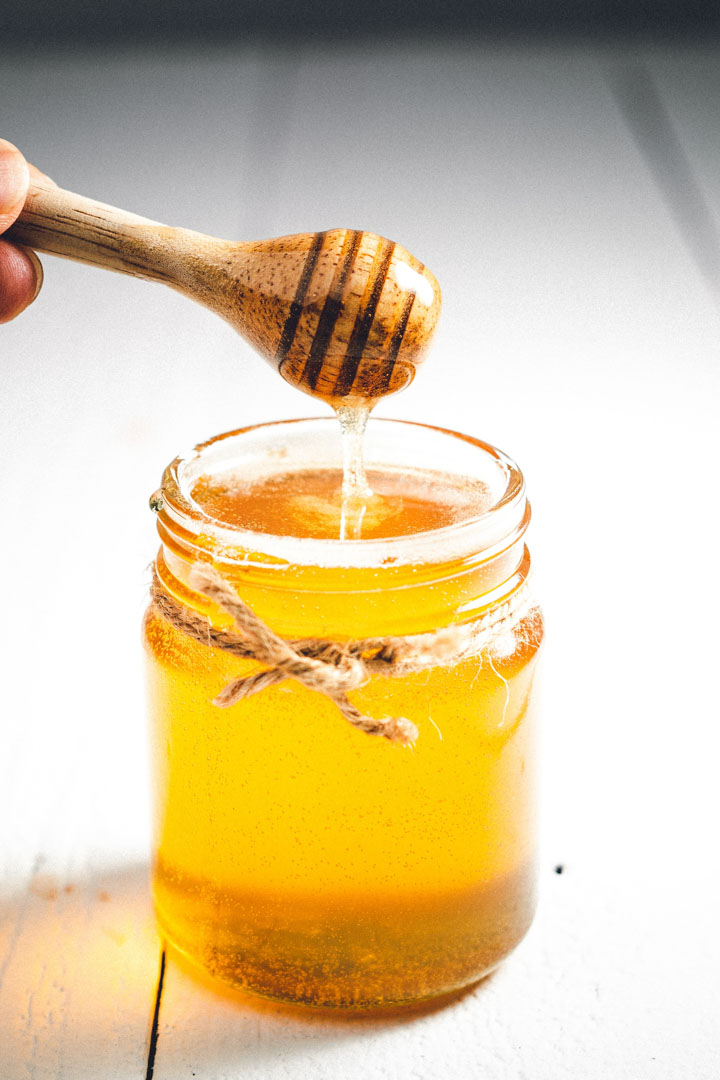
Today I’m going to explain what the different types of honey are, and the differences between them.
I’ll also cover whether raw unfiltered honey is better than organic honey, and other types of honey. And I’ll definitely fill you in on the best places to buy real honey.
Spoiler Alert: I never buy honey at the grocery store.
All of the information and facts about honey that I’m sharing were obtained through research (sources linked) as well as one-on-one conversations with beekeepers over the years.
Different Kinds of Honey
1. Raw Honey
Raw honey is honey that has not been pasteurized (exposed to high heat) after its removed from the hive.

Certain foods, like milk and juice, are pasteurized for food safety reasons. Whether that’s necessary is another topic for another time. Regardless, the heating process kills any bacteria (good or bad) that may exist in food, so us humans don’t get sick.
Honey is naturally anti-bacterial, so it doesn’t need to be pasteurized for food safety reasons. Honey is pasteurized for marketing reasons.
- Raw honey crystalizes (turns solid) over time, and treating it with heat delays crystalization. Therefore, pasteurized honey lasts longer in its liquid state. This extends the shelf life of the honey, making it easier to sell.
- Pasteurizing honey gives it a smoother texture that some consumers prefer.
There is no official legal definition of the term “raw honey” in the United States. But, the National Honey Board defines raw honey as “honey as it exists in the beehive or as obtained by extraction, settling or straining without adding heat.”
2. Unfiltered Honey
Unfiltered honey is honey that comes straight from the hive without passing through a filter.
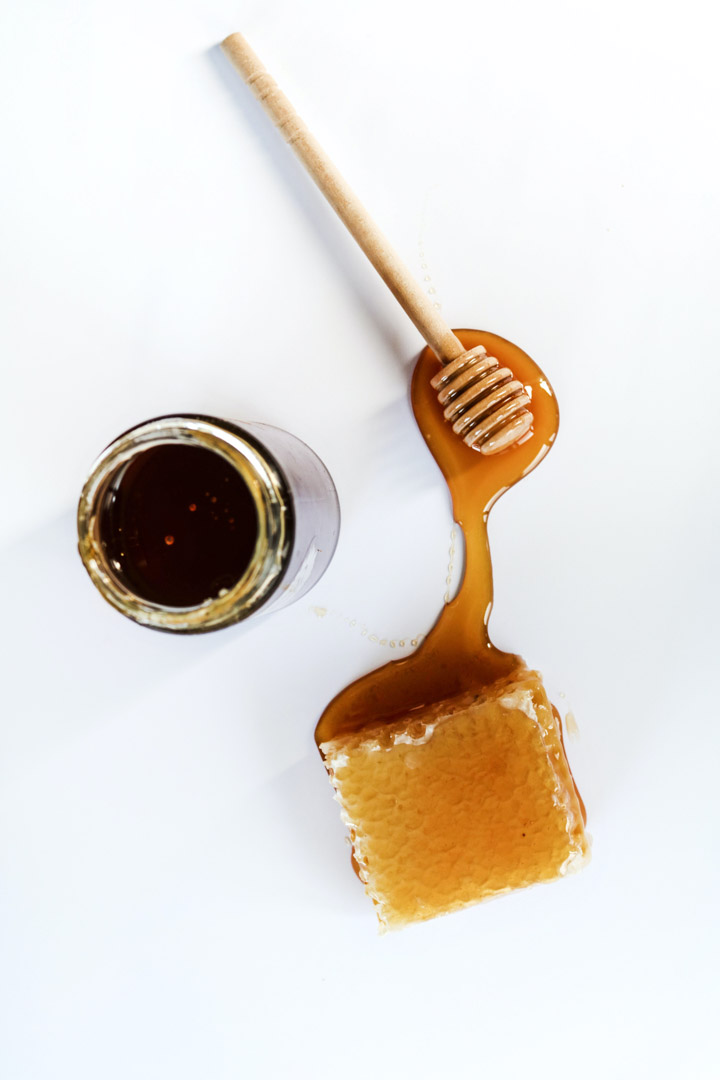
Even the most conscientious beekeepers I know, strain their honey through mesh to remove large particles like comb, bee parts, wax and propolis (bee glue).
But straining honey is not the same as filtering honey. And ultrafiltration is something different as well.
What is filtered honey?
According to USDA, filtered honey is honey that has all of its fine particles (such as bee pollen) removed. Honey is filtered by passing it through an ultra-fine filter that removes all suspended matter from the honey.
Filtering honey is a completely unnecessary waste of resources.
But as with pasteurizing honey, filtering honey makes it more marketable and easier to sell. For example, passing honey through an ultra-fine filter gives the product more clarity. And consumers want clear honey.
What is ultra-filtered honey?
Ultra-filtered honey is a more high-tech procedure where honey is heated, sometimes watered down and then forced at high pressure through extremely small filters. The water may then be removed before it is sold.
According to Food Safety News, ultra-filtration is the only way to remove 100% of the pollen from honey. And pollen is the only way to trace the origin of honey. This has become a problem in the United States because ultra-filtered and contaminated honey from other countries has made its way into our grocery stores.
Is most honey filtered?
This is something Food Safety News wanted to look into. So as part of a major investigation, they purchased over 60 different bottles of honey from grocery stores, farmers markets and natural food stores in 10 states.
They had the honey analyzed for pollen and found:
- 76% of grocery store honey had no pollen
- 100% of the honey purchased at farmers markets and natural food stores had the full expected amount of pollen
These results indicate that 76% of the grocery store honey has been heavily filtered. According to one of the investigators involved, this was even the case with honey jars labeled “raw and unfiltered”.
Whereas, the farmers market honey and honey purchased from natural food stores had not been filtered, or only very minimally filtered.
3. Organic Honey
Let’s talk about organic honey and what it means.
The United States Department of Agriculture has a certified organic program, but they do not have organic standards specific to honey.
Drafts of organic standards for honey have been in the works for over a decade, but as of today, nothing has been finalized.
Honey is a unique product in that it’s made from nectar that honey bees forage 1 to 2 (or more) miles from their home. Certifying honey as organic is unwieldily because here in the United States it’s not really possible for a beekeeper to control whether their bees are only collecting nectar from organic flowers.
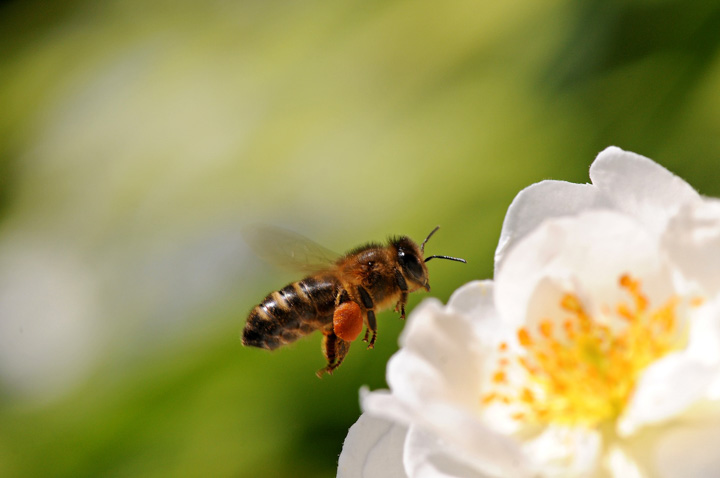
What this means is that most, if not all, of the organic honey you buy in the United States has been imported from other countries that do produce certified organic honey.
Certified Organic Honey from Brazil
For example, Brazil is one of the biggest producers of organic honey in the world.
In Brazil, in order for honey to be certified organic the bee farm must be kept at a distance of at least three kilometers from any contaminants like non-organic land or factories. The vast rainforests in Brazil make this possible.
Certified Organic Honey from Europe
The European Union is also a top producer of organic honey. European organic honey must come from apiaries that are surrounded by 3 kilometers of land that is made up of organic crops or wild vegetation.
There is a lot more to producing organic honey than just the land surrounding apiaries. For example, organic honey must be from bees and bee hives that have not been treated with synthetic chemicals, antibiotics or pesticides.
Keep in mind, organic honey is not necessarily raw or unfiltered. If organic raw honey is important to you, it’s necessary to read labels on organic honey and verify that it hasn’t been treated or processed.
4. Pure Honey
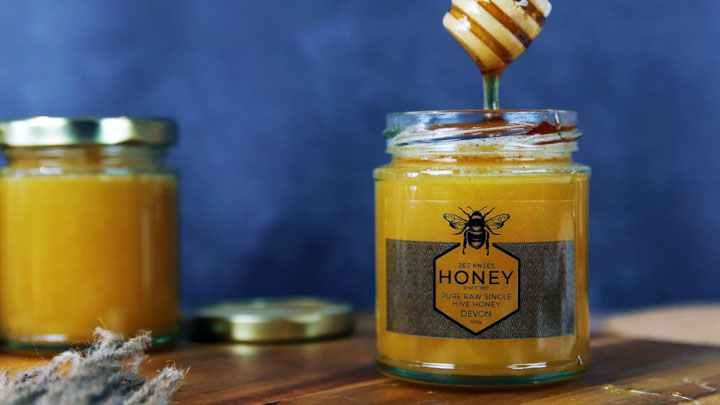
Pure honey is honey without additional ingredients. Other ingredients that are sometimes mixed with honey include high fructose corn syrup, regular corn syrup and sugar.
The USDA does not have a definition for the term “pure honey” and does not monitor or test its use. In other words “pure honey” is just marketing lingo and could be used by less scrupulous honey producers, even if their honey is not really pure.
Pure honey therefore means different things depending on who you talk to. That makes the word “pure” meaningless to me when it comes to a label on honey.
Pure honey is also not necessarily raw or unfiltered. If raw unfiltered honey is important to you, look for those words on the honey label.
What is Fake Honey?
Fake honey is honey that has been adulterated, which means something of inferior quality has been added to it.
The most common honey adulteration is adding cheaper syrups, like corn syrup and sugar cane, to the honey in order boost profits. This is no longer considered pure honey, but the label may still say so.
For example, in 2021 and 2022, the FDA tested 144 samples of imported honey and found 10% were adulterated.
This is part of the reason why I never buy honey at the grocery store and only buy honey directly from local beekeepers.
What’s Better: Raw Unfiltered Honey or Organic Honey
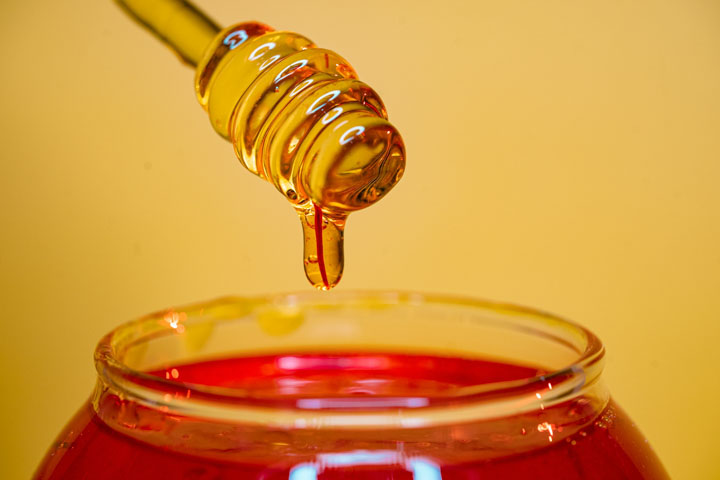
Comparing raw unfiltered honey to organic honey is a bit of a misnomer. This is because organic honey can also be raw and unfiltered. But the organic certification does not guarantee that honey is raw or unfiltered.
In my opinion, organic honey is not the best honey.
The best honey is honey that is not processed (i.e. pasteurized or filtered) and not adulterated. I can get raw unfiltered honey from small beekeepers that I trust. I can only buy organic honey online or at the grocery store.
So I will always choose a local beekeeper’s raw unfiltered honey even if they can’t certify that it’s organic.
Why Raw Unfiltered Honey is Better
The filtering process removes some of the natural elements of honey, such as pollen. I prefer foods that are as close to their natural state as possible, and this is not the case with filtered honey.
As far as raw versus pasteurized honey. The pasteurization process of exposing honey to high temperatures destroys its natural enzymes and heat-sensitive antioxidants. Pasteurization also impacts the unique flavor profile of the honey.
Pasteurized honey is not a natural product, so I only buy raw honey.
Best Place to Buy Raw, Unfiltered Honey
In my experience, the best place to buy raw unfiltered honey is directly from small local beekeepers.
I buy honey from beekeepers at the farmers market. And most of the farmers markets I visit have a beekeeper selling their own honey.
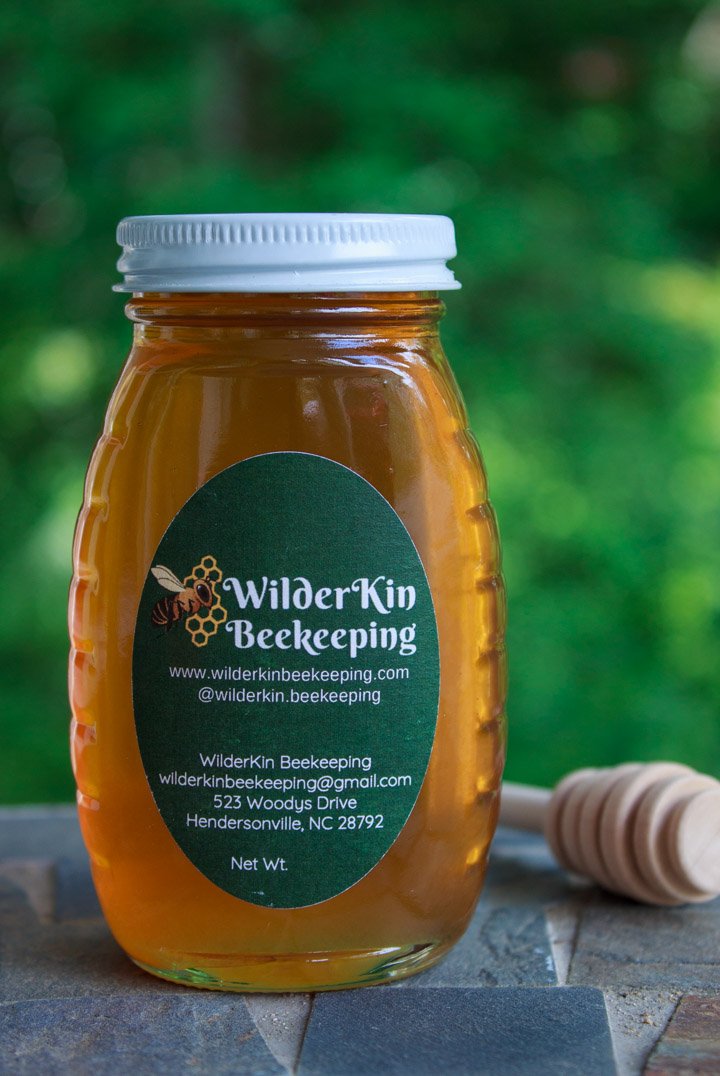
A word of caution – even when buying honey at the farmers market it’s important to ask questions. These questions will tell you whether the person you are buying from is selling their own honey, or honey they bought and bottled from other sources.
Questions to ask when buying honey
- Is the honey produced by their own bees
- Where are their beehives located
- How is the honey strained or filtered
- Is their honey pasteurized
- Is anything added to the honey
If there isn’t a farmers market near you, do an online search for “local honey near me” and reach out to ask about their honey and where you can buy it.
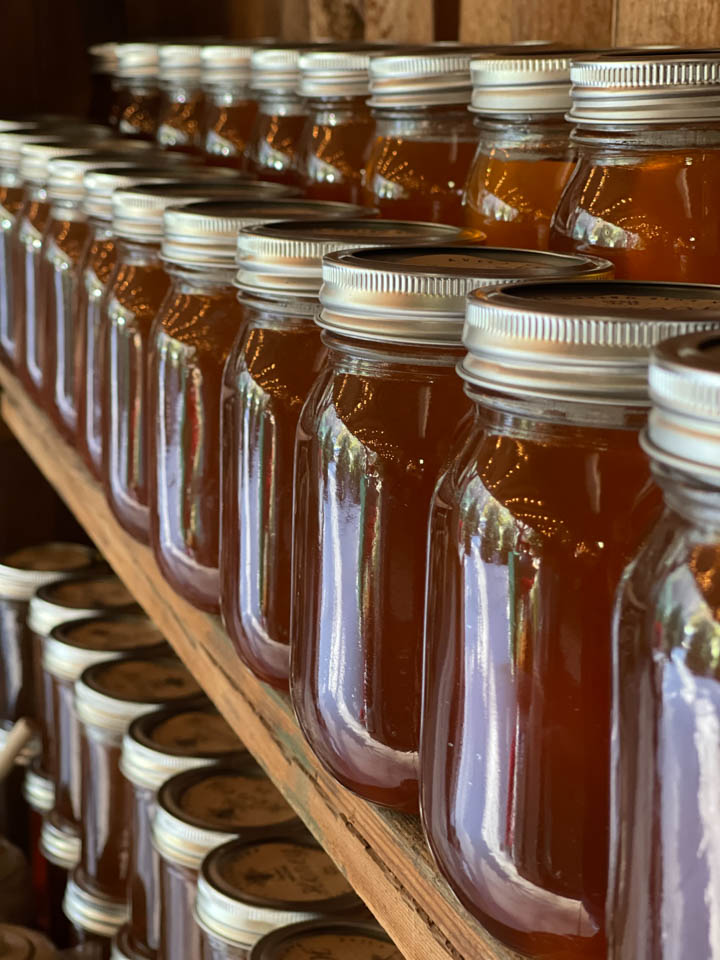
If you live in a small town you might also be able to buy local unprocessed honey at a neighborhood store or roadside market.
I never buy honey at the grocery store.
FAQ About Honey
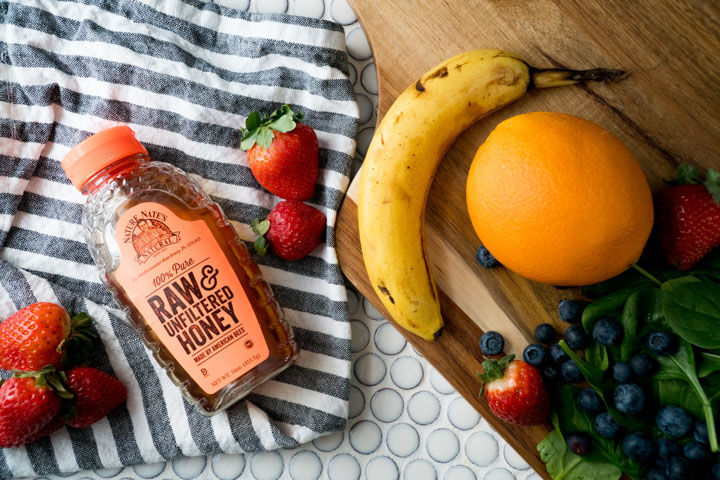
How do you turn honey back to liquid?
If your honey has started to crystalize or turn solid, it’s pretty easy to turn it back to its liquid form. Put the crystalized jar of honey in very warm water and stir it until it’s smooth again. Do not put the honey in boiling water.
Why shouldn’t babies eat honey?
During the first year of a baby’s life, their microbiome is not developed enough to prevent certain bacteria from infecting their body. Clostridium botulinum is a bacterium often found in honey (both raw and pasteurized honey) that can cause infant botulism. Source: Encyclopedia Britannica
Is raw honey safe to eat?
Raw honey is absolutely safe to eat. In fact, you could eat honey straight from the hive.
Honey is very low in moisture and extremely acidic, these two factors make it near impossible for bacteria to live inside honey.
Unlike other foods, there is no need to cook or heat honey before consuming.
How to store raw honey?
Because of the natural anti-bacterial properties of honey, it is shelf-stable for years.
Honey can be stored right on your kitchen counter or in the pantry and does not need to be refrigerated.
In fact, I don’t recommend refrigerating honey because it causes the honey to harden, making it difficult to pour or scoop.
Just be sure not to introduce water or other food products into your honey. These products can harbor bacteria and cause it to grow.
Fun Fact: Today’s excavators are still finding unspoiled pots of honey in the tombs of rich Egyptian royals!
How many bees does it take to make a pound of honey?
It takes about 780 bees their entire lifetime to produce a pound of honey! A single honey bee will only produce a minuscule (1/12 of a teaspoon) amount of honey in its lifetime. Fortunately a single beehive is home to between 60,000 and 80,000 bees!
What is whipped honey?
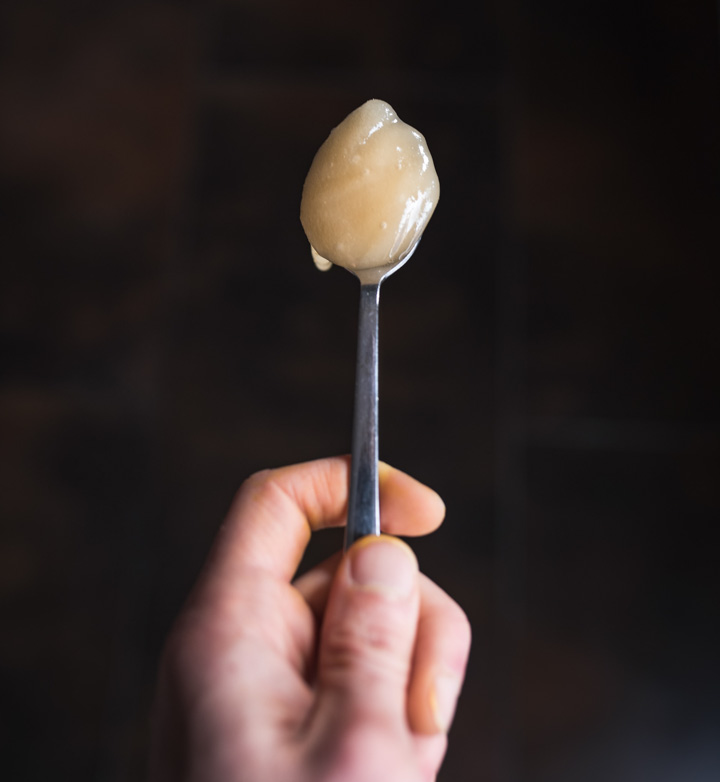
Whipped honey is honey that has been whipped into a more spreadable consistency. Nothing is added to honey to create whipped honey. Whipped honey is also called creamed honey, churned honey, honey fondant or candied honey.
How is Manuka honey different from regular honey?
Manuka honey is made only by bees who forage the nectar of flowers on the Manuka tree. This tree is native to New Zealand and some parts of Australia.
All honey will look and taste different depending on what flowers the bees foraged their nectar from. And nectar is how bees make honey. Manuka honey has a characteristic dark color and strong earthy flavor. Other types of honey vary in color from light to dark.
If you noticed that Manuka honey costs more than other types of honey, you’re right. This is because Manuka honey is more rare. Manuka trees only flower for 4 to 6 weeks every year!
What is the glycemic index of honey?
The glycemic index of honey is 58. The glycemic index of refined sugar is 60.

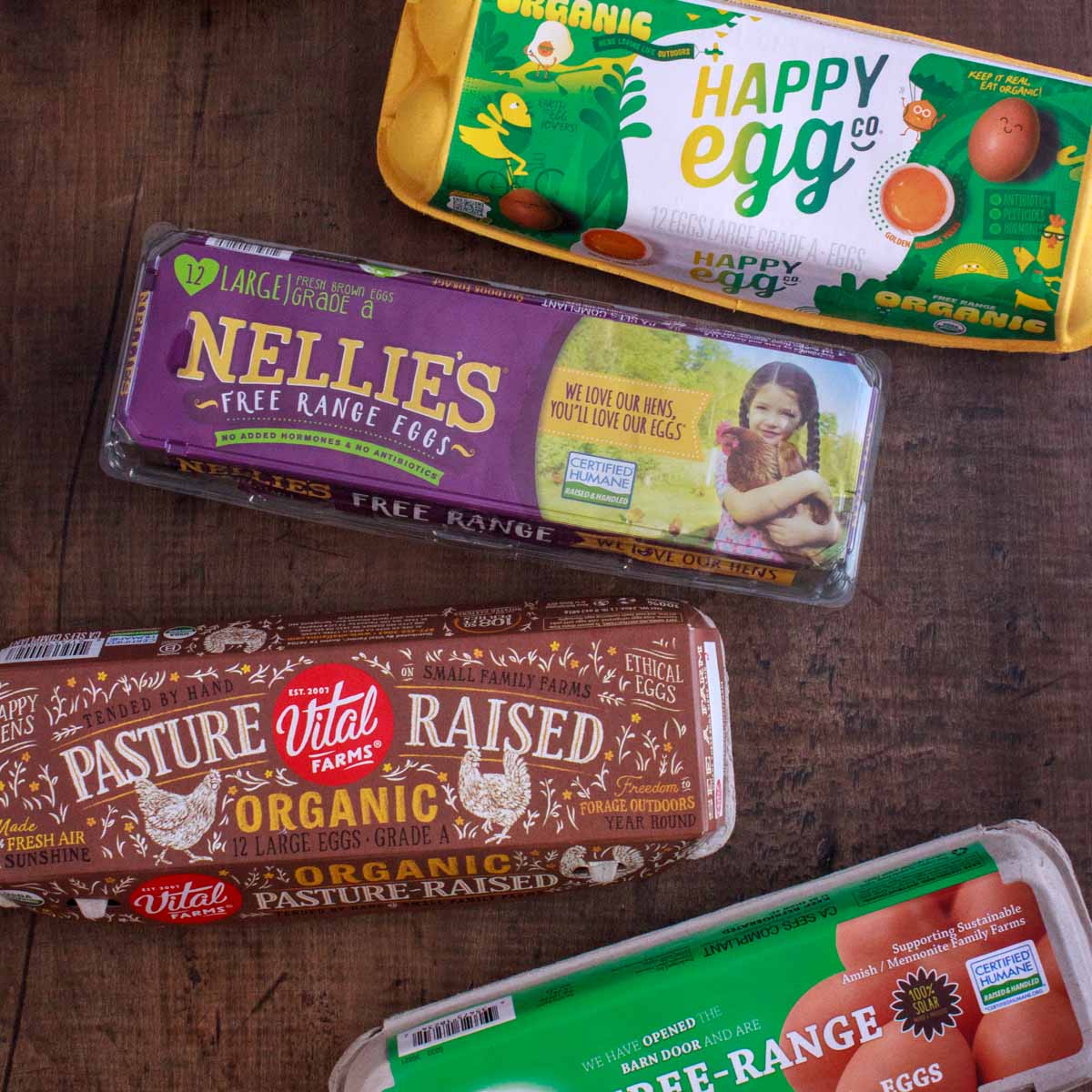
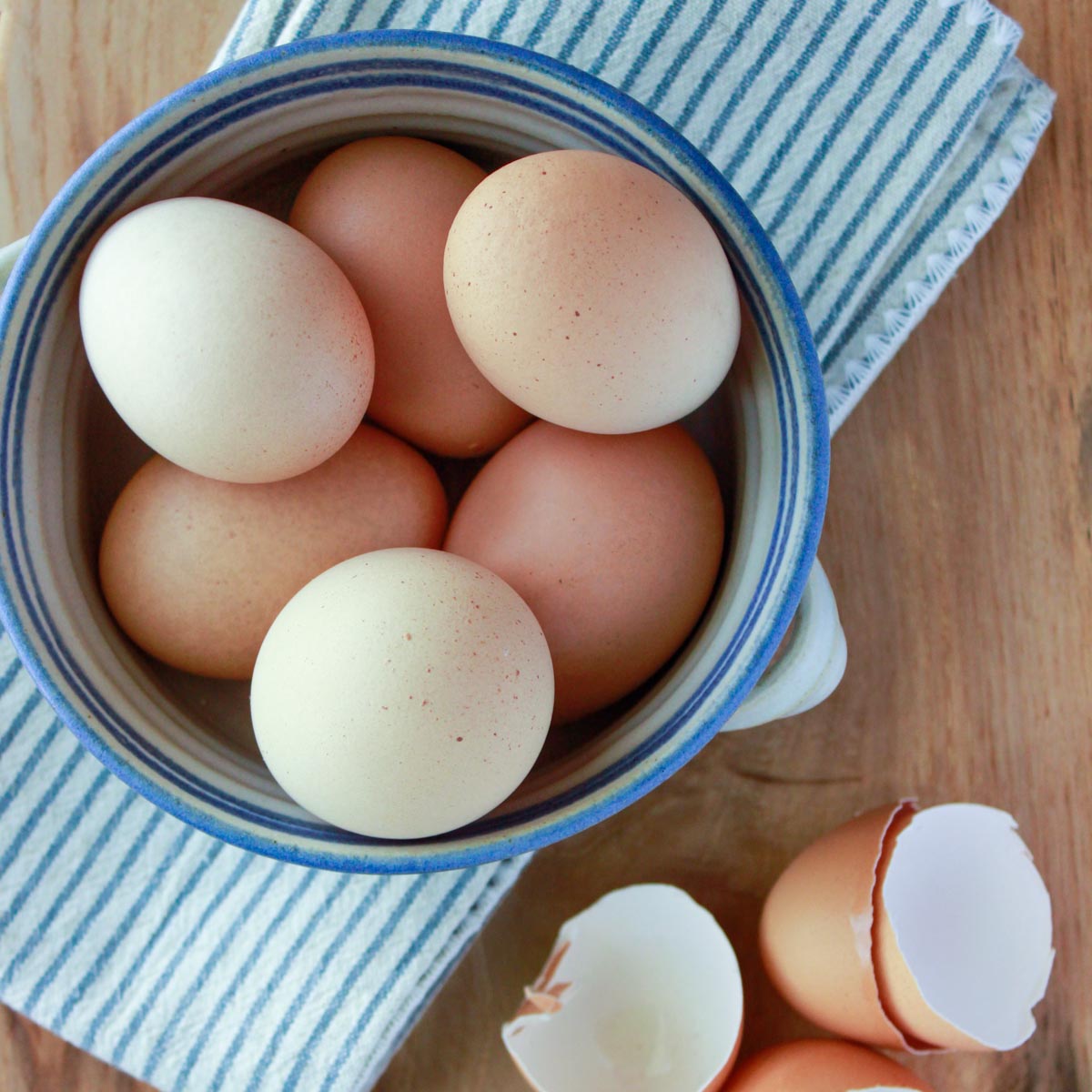
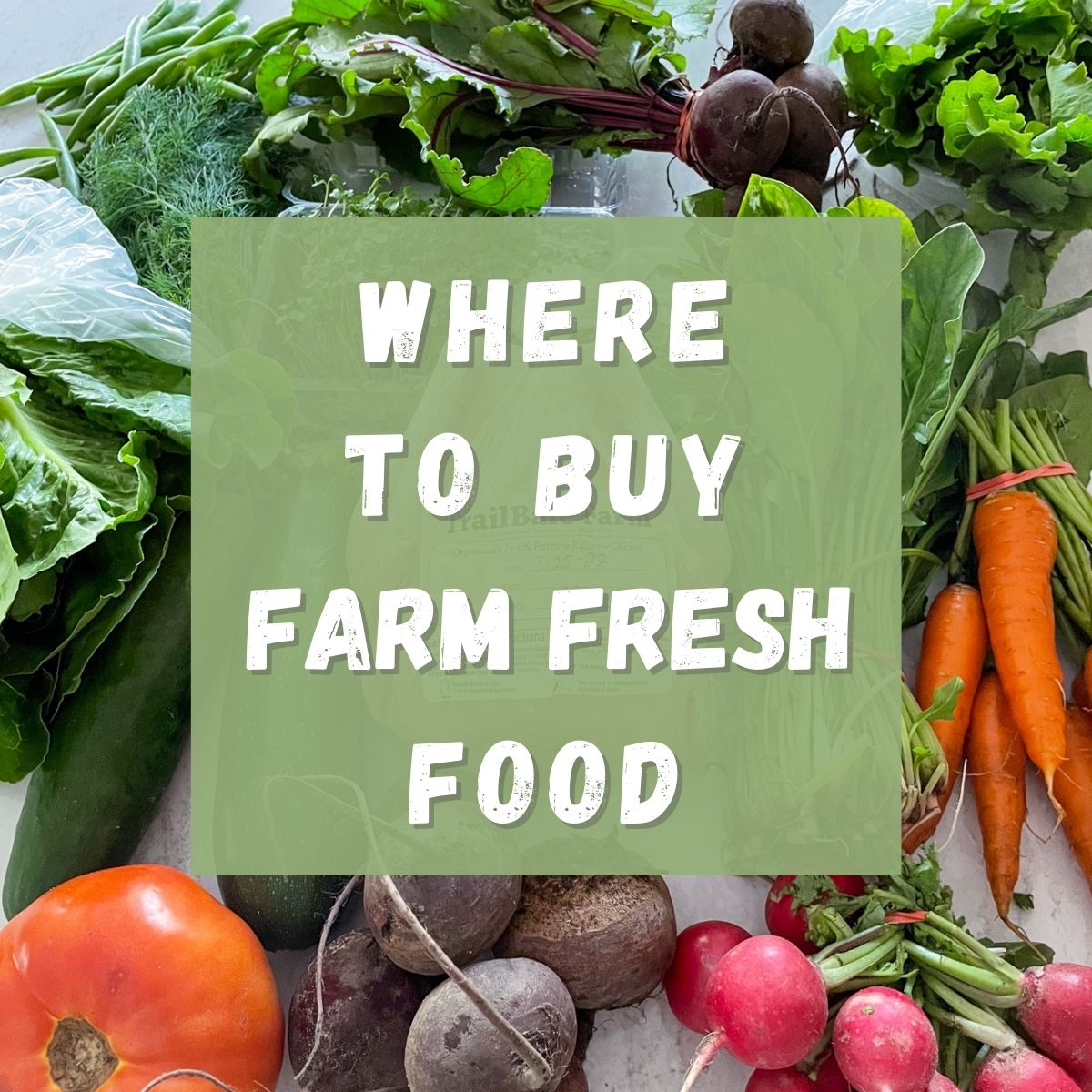


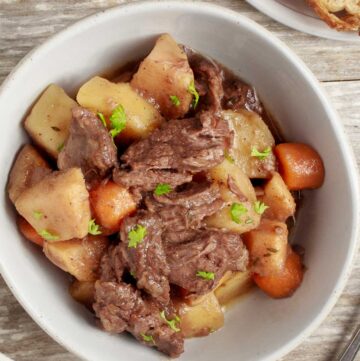

Leave a Reply